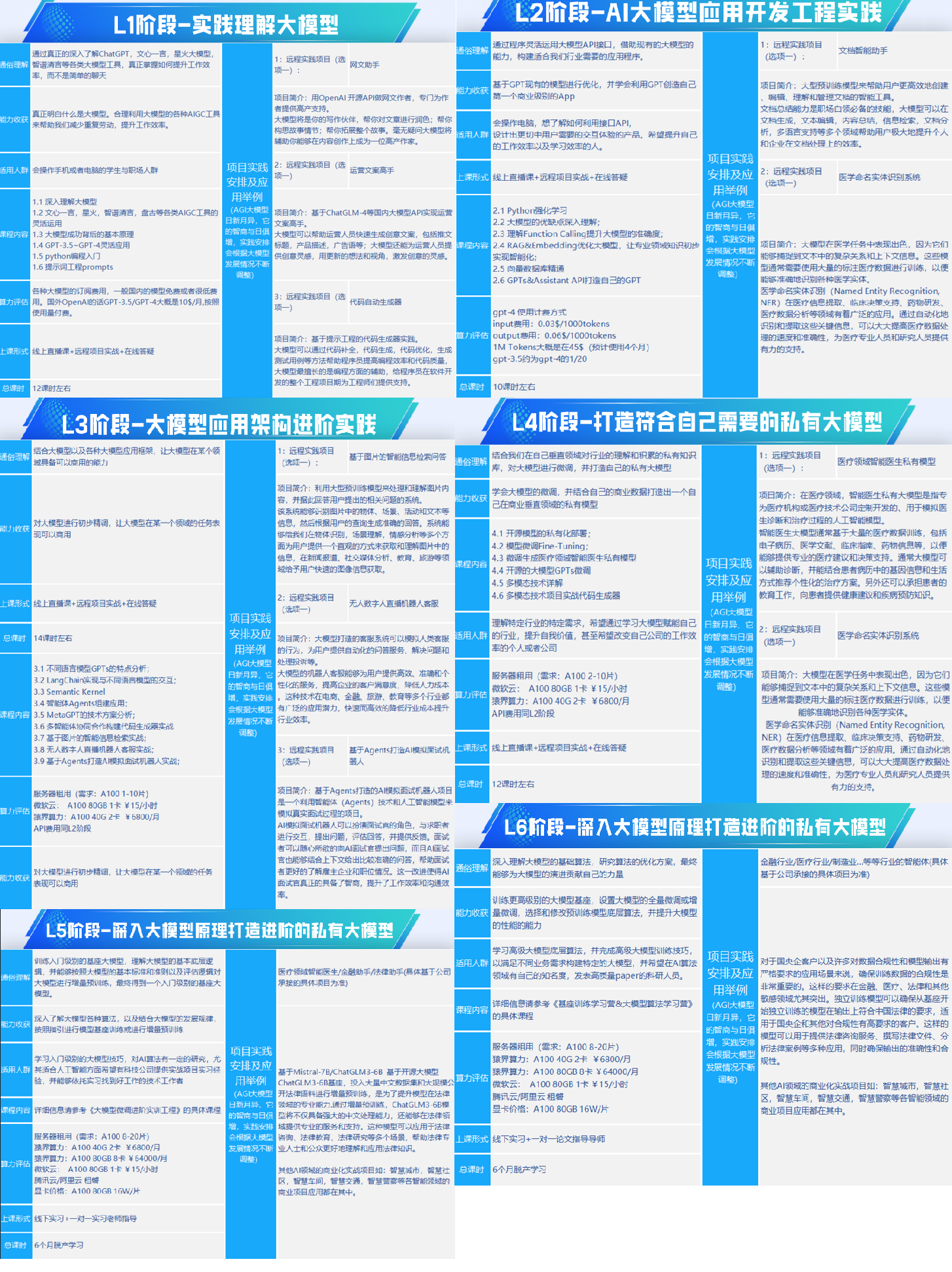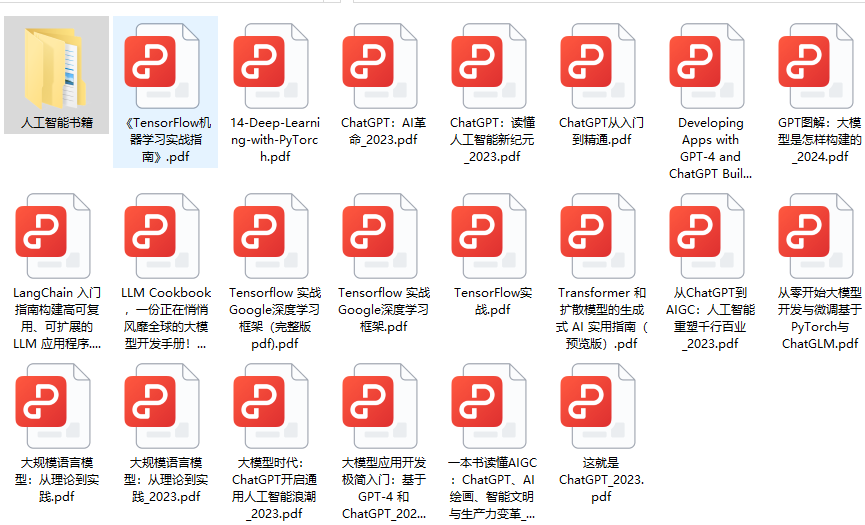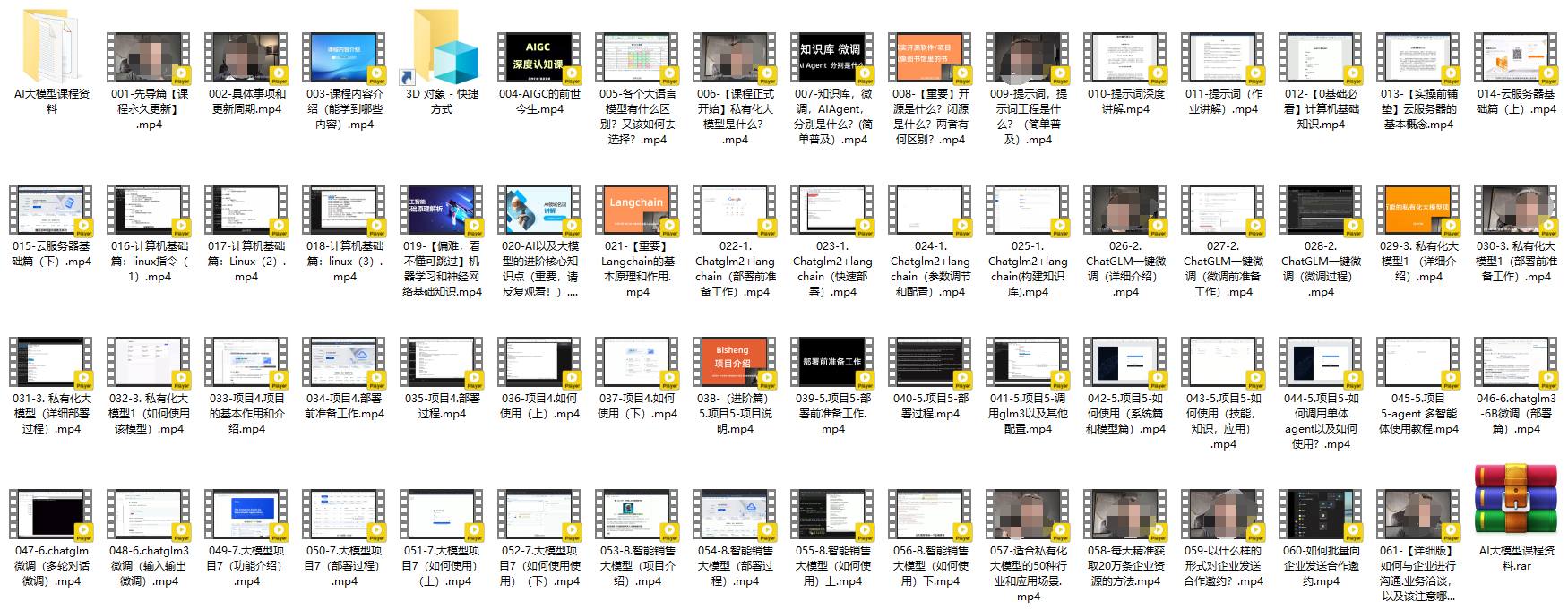最近RAG热度不减,微软开源了GraphRAG,很是火爆呀,本着学习的态度,我也部署使用了一下,无奈没有梯子,不能用openAI,于是想着能不能使用本机的模型,替换openAI的 llm和embedding模型,说干就干,整个过程真是曲折,踩坑不少,但最终 结果还是好的,终于完美部署到本机使用了,哈哈,下面来给大家分享一下,自己也记录一下,以免后边再使用时重复进坑。
本人也搞了一个RAG项目,非常适合学习,自用,二次开发,欢迎star
https://github.com/yuntianhe2014/Easy-RAG
官方安装流程
graphRAG的安装还是很简单的,直接pip
pip install graphrag
但要注意,官方说了需要 python3.10-3.12
安装完成后,建立一个文件夹,存放你的知识数据,目前graphRAG仅支持txt和csv
mkdir -p ./ragtest/input
然后准备一份数据,放到 /ragtest/input 下,我找了一份中文数据,为了演示,截取了部分文本

要初始化您的工作区,让我们首先运行命令graphrag.index --init。由于我们在上一步中已经配置了一个名为 .ragtest1` 的目录,因此我们可以运行以下命令:
python -m graphrag.index --init --root ./ragtest1
执行完后,目录中结构如下

这将在目录中创建两个文件:.env和。settings.yaml``./ragtest
-
.env包含运行 GraphRAG 管道所需的环境变量。如果检查文件,您将看到已定义的单个环境变量。GRAPHRAG_API_KEY=<API_KEY>这是 OpenAI API 或 Azure OpenAI 端点的 API 密钥。您可以将其替换为您自己的 API 密钥。 -
settings.yaml包含管道的设置。您可以修改此文件以更改管道的设置。
我们需要修改 settings.yaml,你可以直接复制我的如下,切记你本机安装了Ollama并且安装了下边两个模型
quentinz/bge-large-zh-v1.5:latest``gemma2:9b
那么你可以复制如下内容到 settings.yaml
``encoding_model: cl100k_base``skip_workflows: []``llm:` `api_key: ollama` `type: openai_chat # or azure_openai_chat` `model: gemma2:9b # 你ollama中的本地llm模型,可以换成其他的,只要你安装了就可以` `model_supports_json: true # recommended if this is available for your model.` `max_tokens: 2048` `# request_timeout: 180.0` `api_base: http://localhost:11434/v1 # 接口注意是v1` `# api_version: 2024-02-15-preview` `# organization: <organization_id>` `# deployment_name: <azure_model_deployment_name>` `# tokens_per_minute: 150_000 # set a leaky bucket throttle` `# requests_per_minute: 10_000 # set a leaky bucket throttle` `# max_retries: 10` `# max_retry_wait: 10.0` `# sleep_on_rate_limit_recommendation: true # whether to sleep when azure suggests wait-times` `concurrent_requests: 1 # the number of parallel inflight requests that may be made`` ``parallelization:` `stagger: 0.3` `# num_threads: 50 # the number of threads to use for parallel processing`` ``async_mode: threaded # or asyncio`` ``embeddings:` `## parallelization: override the global parallelization settings for embeddings` `async_mode: threaded # or asyncio` `llm:` `api_key: ollama` `type: openai_embedding # or azure_openai_embedding` `model: quentinz/bge-large-zh-v1.5:latest #你ollama中的本地embeding模型,可以换成其他的,只要你安装了就可以` `api_base: http://localhost:11434/api # 注意是 api` `# api_version: 2024-02-15-preview` `# organization: <organization_id>` `# deployment_name: <azure_model_deployment_name>` `# tokens_per_minute: 150_000 # set a leaky bucket throttle` `# requests_per_minute: 10_000 # set a leaky bucket throttle` `# max_retries: 10` `# max_retry_wait: 10.0` `# sleep_on_rate_limit_recommendation: true # whether to sleep when azure suggests wait-times` `concurrent_requests: 1 # the number of parallel inflight requests that may be made` `# batch_size: 16 # the number of documents to send in a single request` `# batch_max_tokens: 8191 # the maximum number of tokens to send in a single request` `# target: required # or optional` ` `` ``chunks:` `size: 300` `overlap: 100` `group_by_columns: [id] # by default, we don't allow chunks to cross documents` `input:` `type: file # or blob` `file_type: text # or csv` `base_dir: "input"` `file_encoding: utf-8` `file_pattern: ".*\\.txt$"`` ``cache:` `type: file # or blob` `base_dir: "cache"` `# connection_string: <azure_blob_storage_connection_string>` `# container_name: <azure_blob_storage_container_name>`` ``storage:` `type: file # or blob` `base_dir: "output/${timestamp}/artifacts"` `# connection_string: <azure_blob_storage_connection_string>` `# container_name: <azure_blob_storage_container_name>`` ``reporting:` `type: file # or console, blob` `base_dir: "output/${timestamp}/reports"` `# connection_string: <azure_blob_storage_connection_string>` `# container_name: <azure_blob_storage_container_name>`` ``entity_extraction:` `## llm: override the global llm settings for this task` `## parallelization: override the global parallelization settings for this task` `## async_mode: override the global async_mode settings for this task` `prompt: "prompts/entity_extraction.txt"` `entity_types: [organization,person,geo,event]` `max_gleanings: 0`` ``summarize_descriptions:` `## llm: override the global llm settings for this task` `## parallelization: override the global parallelization settings for this task` `## async_mode: override the global async_mode settings for this task` `prompt: "prompts/summarize_descriptions.txt"` `max_length: 500`` ``claim_extraction:` `## llm: override the global llm settings for this task` `## parallelization: override the global parallelization settings for this task` `## async_mode: override the global async_mode settings for this task` `# enabled: true` `prompt: "prompts/claim_extraction.txt"` `description: "Any claims or facts that could be relevant to information discovery."` `max_gleanings: 0`` ``community_report:` `## llm: override the global llm settings for this task` `## parallelization: override the global parallelization settings for this task` `## async_mode: override the global async_mode settings for this task` `prompt: "prompts/community_report.txt"` `max_length: 2000` `max_input_length: 8000`` ``cluster_graph:` `max_cluster_size: 10`` ``embed_graph:` `enabled: false # if true, will generate node2vec embeddings for nodes` `# num_walks: 10` `# walk_length: 40` `# window_size: 2` `# iterations: 3` `# random_seed: 597832`` ``umap:` `enabled: false # if true, will generate UMAP embeddings for nodes`` ``snapshots:` `graphml: false` `raw_entities: false` `top_level_nodes: false`` ``local_search:` `# text_unit_prop: 0.5` `# community_prop: 0.1` `# conversation_history_max_turns: 5` `# top_k_mapped_entities: 10` `# top_k_relationships: 10` `max_tokens: 5000`` ``global_search:` `max_tokens: 5000` `# data_max_tokens: 12000` `# map_max_tokens: 1000` `# reduce_max_tokens: 2000` `# concurrency: 32``
最后我们将运行管道!
python -m graphrag.index --root ./ragtest1
此时开始构建 索引和知识图谱,需要一定的时间
源码修改:
接下来,你还需要修改 两处源码,保证 进行local和global查询时不报错
1、修改
“C:\Users\Administrator\AppData\Roaming\Python\Python310\site-packages\graphrag\llm\openai\openai_embeddings_llm.py”
修改这个源码,需要你找到对应路径哈
# Copyright (c) 2024 Microsoft Corporation.``# Licensed under the MIT License`` ``"""The EmbeddingsLLM class."""`` ``from typing_extensions import Unpack`` ``from graphrag.llm.base import BaseLLM``from graphrag.llm.types import (` `EmbeddingInput,` `EmbeddingOutput,` `LLMInput,``)`` ``from .openai_configuration import OpenAIConfiguration``from .types import OpenAIClientTypes``import ollama`` `` ``class OpenAIEmbeddingsLLM(BaseLLM[EmbeddingInput, EmbeddingOutput]):` `"""A text-embedding generator LLM."""`` ` `_client: OpenAIClientTypes` `_configuration: OpenAIConfiguration`` ` `def __init__(self, client: OpenAIClientTypes, configuration: OpenAIConfiguration):` `self.client = client` `self.configuration = configuration`` ` `async def _execute_llm(` `self, input: EmbeddingInput, **kwargs: Unpack[LLMInput]` `) -> EmbeddingOutput | None:` `args = {` `"model": self.configuration.model,` `**(kwargs.get("model_parameters") or {}),` `}` `embedding_list = []` `for inp in input:` `embedding = ollama.embeddings(model="quentinz/bge-large-zh-v1.5:latest",prompt=inp)` `embedding_list.append(embedding["embedding"])` `return embedding_list` `# embedding = await self.client.embeddings.create(` `# input=input,` `# **args,` `# )` `# return [d.embedding for d in embedding.data]``
复制我的这个替换就可以,注意 里边的
embedding = ollama.embeddings(model="quentinz/bge-large-zh-v1.5:latest",prompt=inp)
这一句中的 model 要修改成和 你在settings中的embeding模型一致
2、修改
“C:\Users\Administrator\AppData\Roaming\Python\Python310\site-packages\graphrag\query\llm\oai\embedding.py”
修改这个源码,复制下边的直接替换这个文件
# Copyright (c) 2024 Microsoft Corporation.``# Licensed under the MIT License`` ``"""OpenAI Embedding model implementation."""`` ``import asyncio``from collections.abc import Callable``from typing import Any`` ``import numpy as np``import tiktoken``from tenacity import (` `AsyncRetrying,` `RetryError,` `Retrying,` `retry_if_exception_type,` `stop_after_attempt,` `wait_exponential_jitter,``)`` ``from graphrag.query.llm.base import BaseTextEmbedding``from graphrag.query.llm.oai.base import OpenAILLMImpl``from graphrag.query.llm.oai.typing import (` `OPENAI_RETRY_ERROR_TYPES,` `OpenaiApiType,``)``from graphrag.query.llm.text_utils import chunk_text``from graphrag.query.progress import StatusReporter`` ``from langchain_community.embeddings import OllamaEmbeddings`` `` `` ``class OpenAIEmbedding(BaseTextEmbedding, OpenAILLMImpl):` `"""Wrapper for OpenAI Embedding models."""`` ` `def __init__(` `self,` `api_key: str | None = None,` `azure_ad_token_provider: Callable | None = None,` `model: str = "text-embedding-3-small",` `deployment_name: str | None = None,` `api_base: str | None = None,` `api_version: str | None = None,` `api_type: OpenaiApiType = OpenaiApiType.OpenAI,` `organization: str | None = None,` `encoding_name: str = "cl100k_base",` `max_tokens: int = 8191,` `max_retries: int = 10,` `request_timeout: float = 180.0,` `retry_error_types: tuple[type[BaseException]] = OPENAI_RETRY_ERROR_TYPES, # type: ignore` `reporter: StatusReporter | None = None,` `):` `OpenAILLMImpl.__init__(` `self=self,` `api_key=api_key,` `azure_ad_token_provider=azure_ad_token_provider,` `deployment_name=deployment_name,` `api_base=api_base,` `api_version=api_version,` `api_type=api_type, # type: ignore` `organization=organization,` `max_retries=max_retries,` `request_timeout=request_timeout,` `reporter=reporter,` `)`` ` `self.model = model` `self.encoding_name = encoding_name` `self.max_tokens = max_tokens` `self.token_encoder = tiktoken.get_encoding(self.encoding_name)` `self.retry_error_types = retry_error_types`` ` `def embed(self, text: str, **kwargs: Any) -> list[float]:` `"""` `Embed text using OpenAI Embedding's sync function.`` ` `For text longer than max_tokens, chunk texts into max_tokens, embed each chunk, then combine using weighted average.` `Please refer to: https://github.com/openai/openai-cookbook/blob/main/examples/Embedding_long_inputs.ipynb` `"""` `token_chunks = chunk_text(` `text=text, token_encoder=self.token_encoder, max_tokens=self.max_tokens` `)` `chunk_embeddings = []` `chunk_lens = []` `for chunk in token_chunks:` `try:` `embedding, chunk_len = self._embed_with_retry(chunk, **kwargs)` `chunk_embeddings.append(embedding)` `chunk_lens.append(chunk_len)` `# TODO: catch a more specific exception` `except Exception as e: # noqa BLE001` `self._reporter.error(` `message="Error embedding chunk",` `details={self.__class__.__name__: str(e)},` `)`` ` `continue` `chunk_embeddings = np.average(chunk_embeddings, axis=0, weights=chunk_lens)` `chunk_embeddings = chunk_embeddings / np.linalg.norm(chunk_embeddings)` `return chunk_embeddings.tolist()`` ` `async def aembed(self, text: str, **kwargs: Any) -> list[float]:` `"""` `Embed text using OpenAI Embedding's async function.`` ` `For text longer than max_tokens, chunk texts into max_tokens, embed each chunk, then combine using weighted average.` `"""` `token_chunks = chunk_text(` `text=text, token_encoder=self.token_encoder, max_tokens=self.max_tokens` `)` `chunk_embeddings = []` `chunk_lens = []` `embedding_results = await asyncio.gather(*[` `self._aembed_with_retry(chunk, **kwargs) for chunk in token_chunks` `])` `embedding_results = [result for result in embedding_results if result[0]]` `chunk_embeddings = [result[0] for result in embedding_results]` `chunk_lens = [result[1] for result in embedding_results]` `chunk_embeddings = np.average(chunk_embeddings, axis=0, weights=chunk_lens) # type: ignore` `chunk_embeddings = chunk_embeddings / np.linalg.norm(chunk_embeddings)` `return chunk_embeddings.tolist()`` ` `def _embed_with_retry(` `self, text: str | tuple, **kwargs: Any` `) -> tuple[list[float], int]:` `try:` `retryer = Retrying(` `stop=stop_after_attempt(self.max_retries),` `wait=wait_exponential_jitter(max=10),` `reraise=True,` `retry=retry_if_exception_type(self.retry_error_types),` `)` `for attempt in retryer:` `with attempt:` `embedding = (` `OllamaEmbeddings(` `model=self.model,` `).embed_query(text)` `or []` `)` `return (embedding, len(text))` `except RetryError as e:` `self._reporter.error(` `message="Error at embed_with_retry()",` `details={self.__class__.__name__: str(e)},` `)` `return ([], 0)` `else:` `# TODO: why not just throw in this case?` `return ([], 0)`` ` `async def _aembed_with_retry(` `self, text: str | tuple, **kwargs: Any` `) -> tuple[list[float], int]:` `try:` `retryer = AsyncRetrying(` `stop=stop_after_attempt(self.max_retries),` `wait=wait_exponential_jitter(max=10),` `reraise=True,` `retry=retry_if_exception_type(self.retry_error_types),` `)` `async for attempt in retryer:` `with attempt:` `embedding = (` `await OllamaEmbeddings(` `model=self.model,` `).embed_query(text) or [] )` `return (embedding, len(text))` `except RetryError as e:` `self._reporter.error(` `message="Error at embed_with_retry()",` `details={self.__class__.__name__: str(e)},` `)` `return ([], 0)` `else:` `# TODO: why not just throw in this case?` `return ([], 0)
好了,坑你算是跳过去了,哈哈
测试效果
1、local查询
python -m graphrag.query --root ./ragtest1 --method local "人卫社的网址"
按这个格式执行,结果如下

这个也被解析到了知识图谱中了,还可以吧,我数据比较小,你们可以试试大一点的数据
2、global查询
python -m graphrag.query --root ./ragtest1 --method global "人卫社的网址"

如何学习大模型 AI ?
由于新岗位的生产效率,要优于被取代岗位的生产效率,所以实际上整个社会的生产效率是提升的。
但是具体到个人,只能说是:
“最先掌握AI的人,将会比较晚掌握AI的人有竞争优势”。
这句话,放在计算机、互联网、移动互联网的开局时期,都是一样的道理。
我在一线互联网企业工作十余年里,指导过不少同行后辈。帮助很多人得到了学习和成长。
我意识到有很多经验和知识值得分享给大家,也可以通过我们的能力和经验解答大家在人工智能学习中的很多困惑,所以在工作繁忙的情况下还是坚持各种整理和分享。但苦于知识传播途径有限,很多互联网行业朋友无法获得正确的资料得到学习提升,故此将并将重要的AI大模型资料包括AI大模型入门学习思维导图、精品AI大模型学习书籍手册、视频教程、实战学习等录播视频免费分享出来。

第一阶段(10天):初阶应用
该阶段让大家对大模型 AI有一个最前沿的认识,对大模型 AI 的理解超过 95% 的人,可以在相关讨论时发表高级、不跟风、又接地气的见解,别人只会和 AI 聊天,而你能调教 AI,并能用代码将大模型和业务衔接。
- 大模型 AI 能干什么?
- 大模型是怎样获得「智能」的?
- 用好 AI 的核心心法
- 大模型应用业务架构
- 大模型应用技术架构
- 代码示例:向 GPT-3.5 灌入新知识
- 提示工程的意义和核心思想
- Prompt 典型构成
- 指令调优方法论
- 思维链和思维树
- Prompt 攻击和防范
- …
第二阶段(30天):高阶应用
该阶段我们正式进入大模型 AI 进阶实战学习,学会构造私有知识库,扩展 AI 的能力。快速开发一个完整的基于 agent 对话机器人。掌握功能最强的大模型开发框架,抓住最新的技术进展,适合 Python 和 JavaScript 程序员。
- 为什么要做 RAG
- 搭建一个简单的 ChatPDF
- 检索的基础概念
- 什么是向量表示(Embeddings)
- 向量数据库与向量检索
- 基于向量检索的 RAG
- 搭建 RAG 系统的扩展知识
- 混合检索与 RAG-Fusion 简介
- 向量模型本地部署
- …
第三阶段(30天):模型训练
恭喜你,如果学到这里,你基本可以找到一份大模型 AI相关的工作,自己也能训练 GPT 了!通过微调,训练自己的垂直大模型,能独立训练开源多模态大模型,掌握更多技术方案。
到此为止,大概2个月的时间。你已经成为了一名“AI小子”。那么你还想往下探索吗?
- 为什么要做 RAG
- 什么是模型
- 什么是模型训练
- 求解器 & 损失函数简介
- 小实验2:手写一个简单的神经网络并训练它
- 什么是训练/预训练/微调/轻量化微调
- Transformer结构简介
- 轻量化微调
- 实验数据集的构建
- …
第四阶段(20天):商业闭环
对全球大模型从性能、吞吐量、成本等方面有一定的认知,可以在云端和本地等多种环境下部署大模型,找到适合自己的项目/创业方向,做一名被 AI 武装的产品经理。
- 硬件选型
- 带你了解全球大模型
- 使用国产大模型服务
- 搭建 OpenAI 代理
- 热身:基于阿里云 PAI 部署 Stable Diffusion
- 在本地计算机运行大模型
- 大模型的私有化部署
- 基于 vLLM 部署大模型
- 案例:如何优雅地在阿里云私有部署开源大模型
- 部署一套开源 LLM 项目
- 内容安全
- 互联网信息服务算法备案
- …
学习是一个过程,只要学习就会有挑战。天道酬勤,你越努力,就会成为越优秀的自己。
AI大模型学习福利
作为一名热心肠的互联网老兵,我决定把宝贵的AI知识分享给大家。 至于能学习到多少就看你的学习毅力和能力了 。我已将重要的AI大模型资料包括AI大模型入门学习思维导图、精品AI大模型学习书籍手册、视频教程、实战学习等录播视频免费分享出来。
因篇幅有限,仅展示部分资料,需要点击下方链接即可前往获取
2024最新版CSDN大礼包:《AGI大模型学习资源包》免费分享
一、全套AGI大模型学习路线
AI大模型时代的学习之旅:从基础到前沿,掌握人工智能的核心技能!

因篇幅有限,仅展示部分资料,需要点击下方链接即可前往获取
2024最新版CSDN大礼包:《AGI大模型学习资源包》免费分享
二、640套AI大模型报告合集
这套包含640份报告的合集,涵盖了AI大模型的理论研究、技术实现、行业应用等多个方面。无论您是科研人员、工程师,还是对AI大模型感兴趣的爱好者,这套报告合集都将为您提供宝贵的信息和启示。

因篇幅有限,仅展示部分资料,需要点击下方链接即可前往获取
2024最新版CSDN大礼包:《AGI大模型学习资源包》免费分享
三、AI大模型经典PDF籍
随着人工智能技术的飞速发展,AI大模型已经成为了当今科技领域的一大热点。这些大型预训练模型,如GPT-3、BERT、XLNet等,以其强大的语言理解和生成能力,正在改变我们对人工智能的认识。 那以下这些PDF籍就是非常不错的学习资源。

因篇幅有限,仅展示部分资料,需要点击下方链接即可前往获取
2024最新版CSDN大礼包:《AGI大模型学习资源包》免费分享
四、AI大模型商业化落地方案

因篇幅有限,仅展示部分资料,需要点击下方链接即可前往获取
2024最新版CSDN大礼包:《AGI大模型学习资源包》免费分享
作为普通人,入局大模型时代需要持续学习和实践,不断提高自己的技能和认知水平,同时也需要有责任感和伦理意识,为人工智能的健康发展贡献力量。



























 721
721

 被折叠的 条评论
为什么被折叠?
被折叠的 条评论
为什么被折叠?








